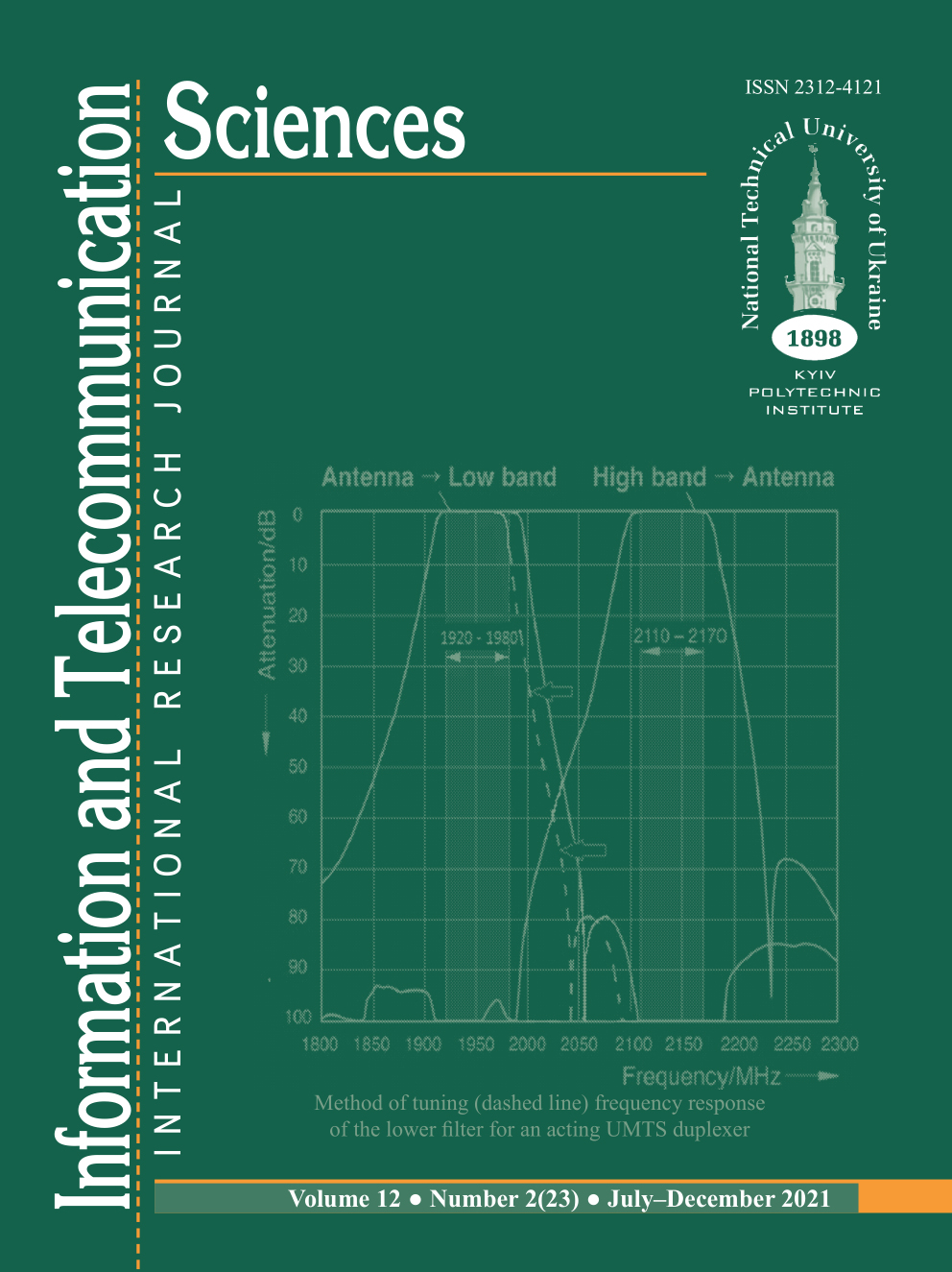EVALUATION OF VOICE TRANSMISSION QUALITY IN THE LTE NETWORKS
DOI:
https://doi.org/10.20535/2411-2976.22021.22-26Keywords:
LTE, MOS, QoS, VoLTE, delay, jitter, packet loss ratioAbstract
Background. LTE mobile networks combine packet network technology and radio technology. Parameters of packet and radio subsystems significantly affects the quality of all traffic types transmission, especially telephone traffic, as the most demanding to such parameters of network transmission as delay, jitter and packet loss rate. The recommendations of the International Telecommunication Union and the documents of the partner organization of telecommunications operators (3GPP) contain hypothetical reference models, targets for end-to-end connection quality, and lists the factors that affect the quality (QoS) of VoLTE services. In addition, the network points are shown where you need to measure the quality of telephone traffic and tools for quality assessment. The quality of telephony services is assessed according to the E-model using the method of determining the mean opinion score (MOS). However, this technique is intended primarily to determine the MOS during the network planning. To calculate the MOS in a working network, you have to measure such network performance first such as voice delay and packet loss rate. This article presents the method of calculating MOS in the LTE network based on the E-model and presents the results of practical quality studies.
Objective. The purpose of this article is research the impact of delay and packet loss ratio and voice codec characteristics in the real LTE network on quality of telephone services.
Methods. Analysis of factors affecting on telephone services quality and analysis MOS assessment methods. Practical studies of the delay and packet loss ratio affect the MOS level in various conditions of radio coverage and network load.
Results. Practical results of delay and packet loss ratio influence on the telephone services quality in the LTE network. Calculated MOS based on the practically measured delay and packet loss ratio.
Conclusions. The combination of packet technologies, modern AMR-WB codecs and QoS support mechanisms in the LTE networks provides high quality perception of voice messages at the level of not less than 4 on the MOS scale. With a delay not exceeding 180 ms, a sufficiently high quality of voice transmission is ensured (MOS ≈ 4). VoLTE technology using the AMR-WB codec is quite resistant to packet loss and provides high quality perception of voice messages at a packet loss ratio of up to 1%.
References
ITU-T Recommendation G.107 (06/2015) The E-model: a computational model for use in transmission planning.
ITU-T Recommendation G.107.1 (06/2019) International telephone connections and circuits. Transmission planning and the E-model. Wideband E-model.
ITU-T Recommendation G.113 (11/2007) International telephone connections and circuits. General Recommendations on the transmission quality for an entire international telephone connection. Transmission impairments due to speech processing.
ITU-T Recommendation G.722.2 (07/2003) Wideband coding of speech at around 16 kbit/s using Adaptive Multi-Rate Wideband (AMR-WB).
Downloads
Published
How to Cite
Issue
Section
License

This work is licensed under a Creative Commons Attribution 4.0 International License.
The ownership of copyright remains with the Authors.
Authors may use their own material in other publications provided that the Journal is acknowledged as the original place of publication and National Technical University of Ukraine “Igor Sikorsky Kyiv Polytechnic Institute” as the Publisher.
ITS articles are published under Creative Commons licence:
- Authors retain copyright and grant the journal right of first publication with the work simultaneously licensed under CC BY 4.0that allows others to share the work with an acknowledgement of the work's authorship and initial publication in this journal.
- Authors are able to enter into separate, additional contractual arrangements for the non-exclusive distribution of the journal's published version of the work (e.g., post it to an institutional repository or publish it in a book), with an acknowledgement of its initial publication in this journal.
- Authors are permitted and encouraged to post their work online (e.g., in institutional repositories or on their website) prior to and during the submission process, as it can lead to productive exchanges, as well as earlier and greater citation of published work.

